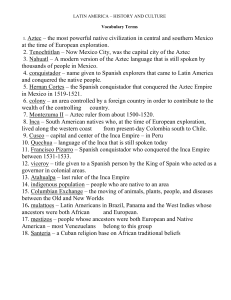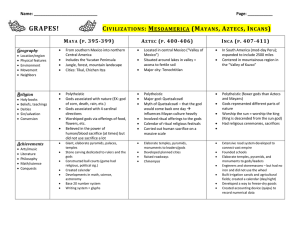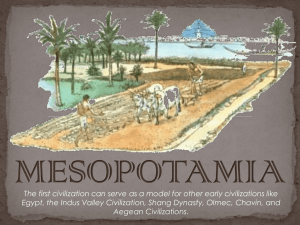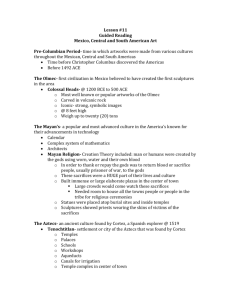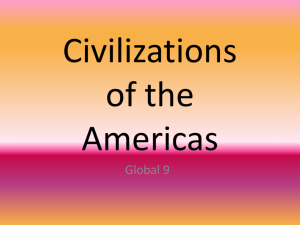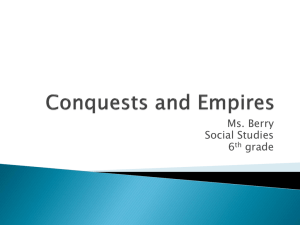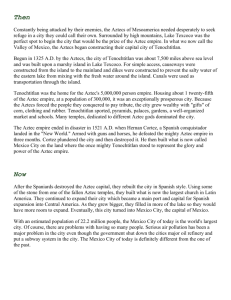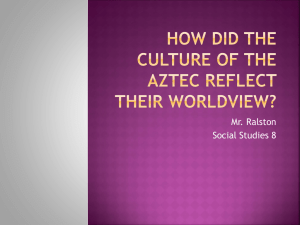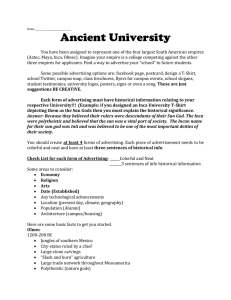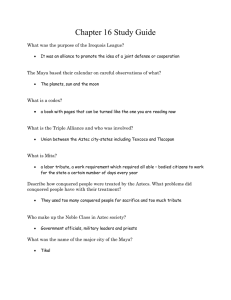File
advertisement
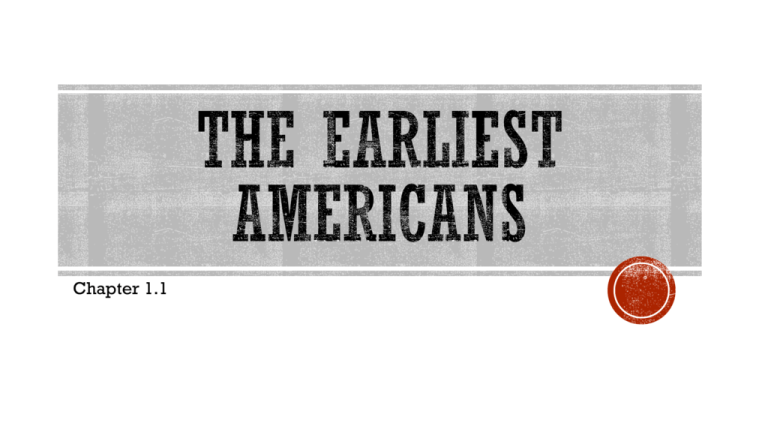
Chapter 1.1 Land-Bridge Theory Glaciers Dry land Bering Strait Coastal-Route Theory Crossed the arctic waters by boat. Traveled southwestward along pacific coast. Early humans could fill most of their needs by hunting. Hunting provided them with food, furs, clothing, and tools (bones). Large animals began to disappear. Discovery of farming changed lives. Discovery of irrigation Surplus=trade Definition of Civilization An advanced culture in which people have developed cities, science, and industries. Three largest civilizations Mayas Aztecs Incas Between A.D. 250 and A.D.900 Built cities in Mexico and Central America Large plazas with pyramids, temples, ball courts, and palaces. Developed arts, a system of government, and written language. Observed stars and heavens Most accurate calendar known until modern times A.D. 900 began to abandon their cities Remains a mystery Disease? Overpopulation? Language remains the root of more than 20 languages in Central Amer. Was on the rise as Mayan civilization declined. Tenochtitlan Great capital city, site of Mexico City Built on a series of islands in a large lake. Connected to mainland by stone roadways. Farmers raised crops on floating platforms. Largest city in the world at the time- more than 200,000 people. Religion dominated Aztec life. Dozens of temples honored Aztec gods. To them, prosperity depended on the good will of gods. Practiced human sacrifices as an offering to the gods. 1400s-Aztec armies bought half do modern-day Mexico under their control. Had effective but harsh rulers. Conquered tribes were forced to send treasure, food, and prisoners to capital. Conquered people had to pay high taxes. 1400s- largest empire. Empire stretched down the coast of South America, along the Andes, across the Atacama desert, and reached the fringes of the Amazon rain forest. Cuzco Capital of Incan empire Linked to other cities and towns by a great network of roads. Spaniard man called inca highway "the finest road to be seen in the world" Constructed buildings of huge stones. Produced fine weavings and metalwork. Rulers wore gold and silver jewelry and palaces contained plates of gold.
